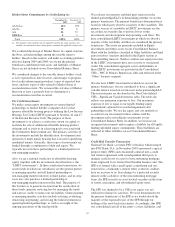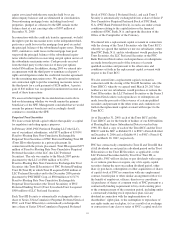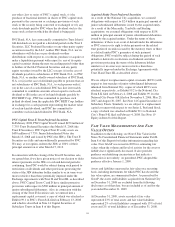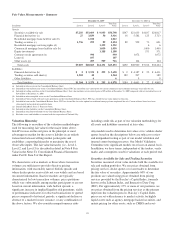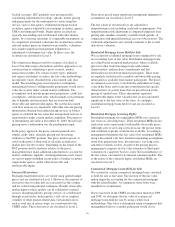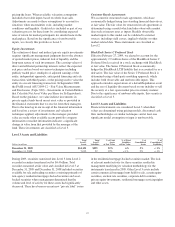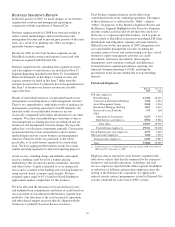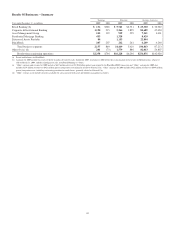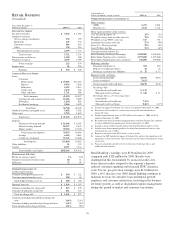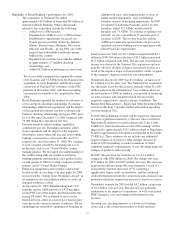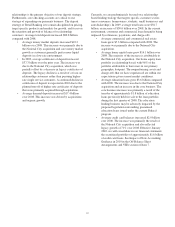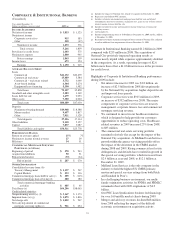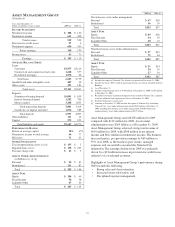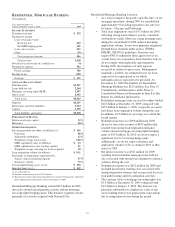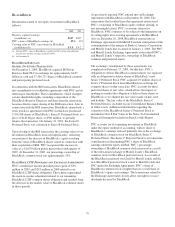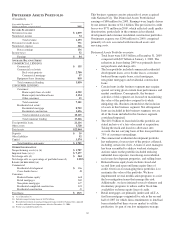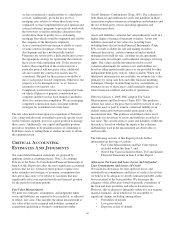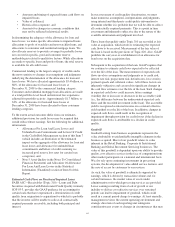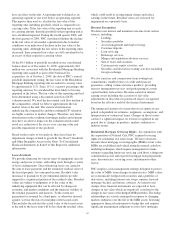PNC Bank 2009 Annual Report Download - page 56
Download and view the complete annual report
Please find page 56 of the 2009 PNC Bank annual report below. You can navigate through the pages in the report by either clicking on the pages listed below, or by using the keyword search tool below to find specific information within the annual report.relationships is the primary objective of our deposit strategy.
Furthermore, core checking accounts are critical to our
strategy of expanding our payments business. The deposit
strategy of Retail Banking is to remain disciplined on pricing,
target specific products and markets for growth, and focus on
the retention and growth of balances for relationship
customers. Average total deposits increased $80.8 billion
compared with 2008.
• Average money market deposits increased $22.2
billion over 2008. This increase was primarily due to
the National City acquisition and core money market
growth as customers generally prefer more liquid
deposits in a low rate environment.
• In 2009, average certificates of deposit increased
$37.3 billion over the prior year. The increase was
due to the National City acquisition, which was
partially offset by a decrease in legacy certificates of
deposits. The legacy decline is a result of a focus on
relationship customers rather than pursuing higher-
rate single service customers. A continued decline in
certificates of deposit is expected in 2010 due to the
planned run off of higher rate certificates of deposits
that were primarily acquired through acquisition.
• Average demand deposits increased $17.4 billion
over 2008. This increase was driven by acquisitions
and organic growth.
Currently, we are predominately focused on a relationship-
based lending strategy that targets specific customer sectors
(mass consumers, homeowners, students, small businesses and
auto dealerships). In 2009, average total loans were $56.7
billion, an increase of $30.6 billion over 2008. In the current
environment, consumer and commercial loan demand is being
outpaced by refinances, paydowns, and charge-offs.
• Average commercial and commercial real estate
loans grew $7.3 billion compared with 2008. The
increase was primarily due to the National City
acquisition.
• Average home equity loans grew $14.1 billion over
2008. The majority of the increase is attributable to
the National City acquisition. Our home equity loan
portfolio is relationship based, with 96% of the
portfolio attributable to borrowers in our primary
geographic footprint. The nonperforming assets and
charge-offs that we have experienced are within our
expectations given current market conditions.
• Average education loans grew $3.6 billion compared
with 2008. The increase was due to the National City
acquisition and an increase in the core business. The
core business increase was primarily a result of the
transfer of approximately $1.8 billion of education
loans previously held for sale to the loan portfolio
during the first quarter of 2008. The education
lending business may be adversely impacted by the
proposed legislation surrounding guaranteed
education loans issued under the current Federal
program.
• Average credit card balances increased $2.0 billion
over 2008. The increase was primarily the result of
the National City acquisition and also reflected
legacy growth of 71% over 2008. Effective January
2010, we will consolidate in our financial statements
the securitized portfolio of approximately $1.6 billion
of credit card loans. See Impact of New Accounting
Guidance in 2010 in the Off-Balance Sheet
Arrangements and VIEs section of Item 7.
52


